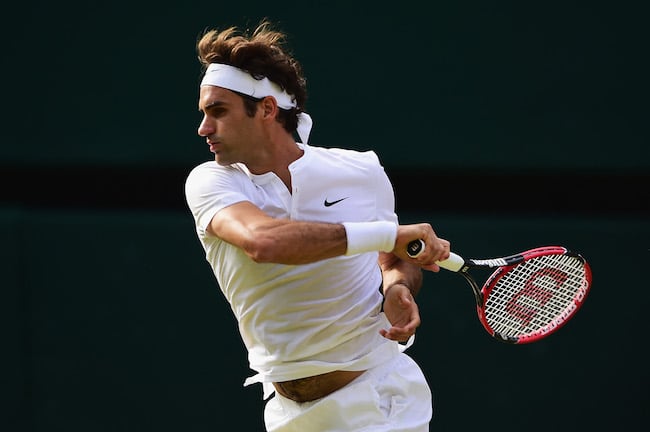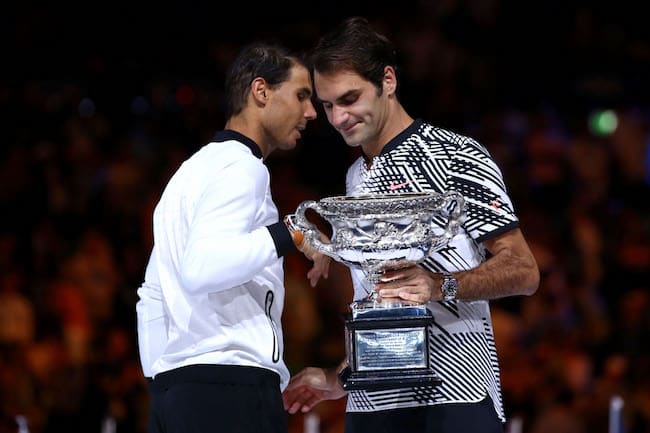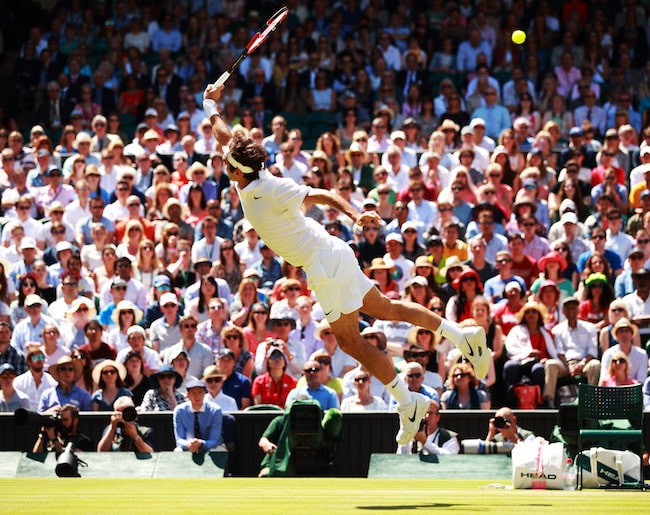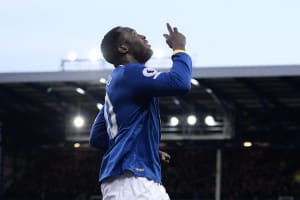Roger Federer sits comfortably at the table of sport’s all-time greats writes CLINTON VAN DER BERG in SportsClub magazine.
It’s a game we all play. Michael Jordan vs LeBron James. Muhammad Ali vs Sugar Ray Robinson. Jack Nicklaus vs Tiger Woods. Who was the greatest?
If we accept that the only athletes in these conversations are the ones who have transcended their sports, the first point of reference is in the great breadth of statistics and titles that fortify their achievements. This is fine if you don’t believe in the emotional grandeur that frames sport at the highest level or you’re immune to the spine-tingling sensation
that overcomes you when you witness something truly extraordinary.
These are the aesthetically pleasing athletes who move us and sometimes even reduce us to tears. They do it through their grace and power and through their presence and cultural relevance, even away from the white heat of action. These factors must emphatically count for something when we decide who sits where in the pantheon.
Enter Roger Federer, tennis’ fabled immortal.
In any conversation about the greatest tennis player of all time, Federer must be in the mix, if not outright in front. Excellence in tennis is measurable in cold statistics, but where Federer elevates his case is in the pure artistry he demonstrates whenever he plays.
Like Ali in his pomp, there’s a liquid touch to his strokes and a lightness of foot that is almost balletic. Everything is done with an insouciant flourish, his coolness at odds with opponents who often grind it out because they know no other way. He’s the ultimate assassin because he’ll carve you up like a cold-hearted surgeon – while playing with a smile on his face.
And it’s a trait that follows him beyond his temple of tennis. While he used to be a hothead in his teens, Federer now personifies elegance, class and erudition, on and off the court. Even his rivals find it impossible to dislike him.
Everyone loves him. Mums and dads love him. Other sport stars love him. Celebrities love him. The common man loves him. He’s impossibly, irrepressibly nice.
His many good virtues add layers to the label of great. It’s much like the case for ranking Ali over Sugar Ray. The latter was a superior boxer, but Ali’s social standing, his place in the public consciousness and his almost regal bearing put him in a realm all his own. The former world heavyweight champion may not have been the best fighter, perhaps not even the best heavyweight, but he was undoubtedly the greatest. It’s a critical distinction.
By common consent, Federer was done at he start of 2017. Not only was he already 35, he was returning from knee surgery. What’s more, his three rivals among the acknowledged Big Four – Novak Djokovic, Rafael Nadal and Andy Murray – had all made major gains over the years. The depth at the highest level had never been as good, or as ferocious.
There was also a sense, notwithstanding his majesty, that his tank was empty. He hadn’t won a Grand Slam in five years.
And then he rocked up in Melbourne in January. He said all the right things, but this time his game was in sync with his ambition. As he rolled into the Australian Open final against his old nemesis Nadal, fans willed him on, not quite convinced he could turn back time or the savage challenge of a rival five years his junior.
He was an extraordinary player a decade previously, but fans who witnessed his 6-4, 3-6, 6-1, 3-6, 6-3 defeat of Nadal wondered if he had ever been better. Nothing Nadal, perhaps the second-best player in history, produced could counter the splendour of Federer’s play.
‘This one stands alone,’ he said.
What’s obvious is how Federer has tinkered and tailored his game through the years. He’s more offensive now and has invested many hours in improving his backhand. He takes the ball early and goes for his shots, hitting through the ball with strength and trying to be more creative with his shot-making.
Two things motivated the changes: the continued threat of his main rivals and the need to reinvent himself to counter any predictability in his game.
It hasn’t been easy. In the wake of his Melbourne triumph, he spoke earnestly about how advancing age made it more difficult to do the things he managed as a 20-year-old.
He even hinted that he no longer partied as hard as he once did.
Federer now stands atop the major summit with 18 titles, but he isn’t done yet. Wimbledon, his favourite Grand Slam, looms. He needs one more title to become the most successful male singles player in Wimbledon history. He has seven.
Think about that for a moment. One Grand Slam means you’re better than most. Two means you have the makings of someone special. Half a dozen already puts you in rarefied company.
Above 10? Forget it, that’s where the gods of tennis like Rod Laver, Pete Sampras and Bjorn Borg hang out.
Leaving aside the beauty of his game, Federer’s haul alone puts him in the company of one.
Should we dare hope for one more miracle at Wimbledon?
If you understand his relationship with the tournament and reflect on his seven triumphs at SW19, it would be dangerous to bet against a man who so emphatically proved us wrong in January. Somehow, he remains as hungry and as keen as the young lions starting out. The way he has reworked his game proves this, as does his ability to hang tough with his younger rivals.
Plus Wimbledon is where he’s most comfortable. The crowds adore him and he knows main court like his home garden that overlooks Lake Zurich.
Whatever happens, his claim to the title of tennis’ greatest player is compelling. He is, by extension, comfortably placed among the greatest sportsmen of all time, alongside the
like of Leo Messi, Pelé, Jordan, Ali, Wayne Gretzky, Nicklaus, Usain Bolt and Don Bradman.
Kings, all.
– This article first appeared in issue 109 of SportsClub magazine







